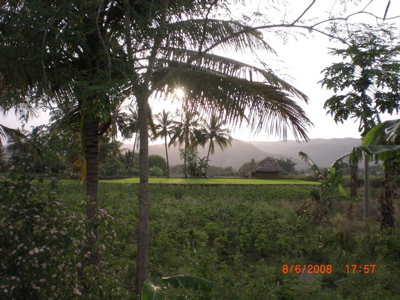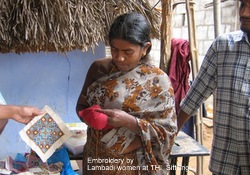
Next Home
Visit to Tribal Health Initiative, Sittilingi, Tamil Nadu
- A Report by Sangeetha Sriram (July, 2008)

Changing lifestyles of the tribals
This is a picture-perfect place with mountains, streams, forests and people. I spent some quality time with Dr.Lalitha who spoke about their definition of health being not one limited to just curing illness, but one encompassing physical, emotional and spiritual health. The tribals, who used to once cultivate nutritious dry-land crops like millets and pulses, and dry-land paddy varieties, and vegetables for their own consumption, gained irrigation facilities in the 80s when outsiders bought land and moved in—then began land-leveling using machinery, the use of urea, irrigation, and the cultivation of water-intensive hybrid paddy varieties, sugarcane, etc., as cash crops for the market. Now, with the invasion of TV sets, the people no longer have interest in growing and processing millets for their consumption, but conveniently buy ready-to-use ration rice for Rs.2.
In just two years, the consumption of bajra / kambu has dropped by 80%. Most farmers are in debt. Nutrition levels have fallen drastically. THI entered the area of agriculture just two years ago. And the response has been good.
What THI does
I liked the way THI didn't go about blindly promoting 'organic agriculture' in a narrow sense of the word. They urge their farmers to produce nutritious organic food for their consumption, and they will find a market only for what is grown in excess. Farmers are seeing the value in this and are agreeing to the condition. I expressed my concern to Dr. Lalitha about how our coming in to source for the urban market would unnecessarily entrench the tribals into a cash-economy. Her response was that due to forces much larger than us, they are already entrenched. “We need to begin somewhere. So, let us first get them to at least go back to growing miIlets for Chennai people rather than sugarcane for the mills.” I was assured about their sensitivity to the issue.
Working with reStore
Dr.Lalitha was very happy to work with reStore and supply us with produce. I met two women farmers (Sonal and Kuppi) who are also heading a women's group to process millets and pulses for selling in the market. I saw the pulveriser and decodecator that they have bought and operate. They make satthu maavu kanji and turmeric powder. We can source rice (four varieties), six millets (a few varieties from among these six), toor dal, urad dal, groundnuts, oils (coconut, gingelly, groundnut).
The Lambadis

Sittilingi is inhabited by the Lambadi tribe, where the women and men traditionally made extraordinarily decorative articles for their daily use. Their broom is quite an art piece! Their embroidery (for their own garments) is exquisite. When there were only two women left in the village who knew the Lambadi embroidery art, THI got them to train other young women in the art.
Now, the women make some very nice designs for cushion covers etc. We saw some amazing designs that Neela (one of the two women) and Sarada (her daughter) had made. Neela's son Arul stitches finished products using these pieces which THI helps market. They are also experimenting with soap-making using natural oils and herbs, which they can supply to us at a later date.
The youth of Sittilingi
Naveen and I were taken around in a jeep to these places by three young men from Sittilingi, who are now staffers. Selvaraj is a Therukkoothu artist, and a farmer, and has extensive knowledge about plants there. Like all other youth, he left his village, tried his hand at being a lorry driver, conductor, working in Tirupur mills, and finally came back to his village to do farming. Manjunath also learnt computers, stayed in Chennai and then decided to come back to his village and seems to find his work here meaningful. Ediappan (who finished school two years ago) decided not to leave his village and is working in THI and likes his work.
We had a discussion about the latest trend of youth leaving for Tiruppur and other cities, owning expensive cell phones and 'showing off'. Some of them have started returning to Sittilingi to their farms, seeing the poor quality of life in the cities--pollution, noise, stress, etc. We also met with Anu and Krishna, who run a small alt-ed resource centre called Thulir.
Next Home



